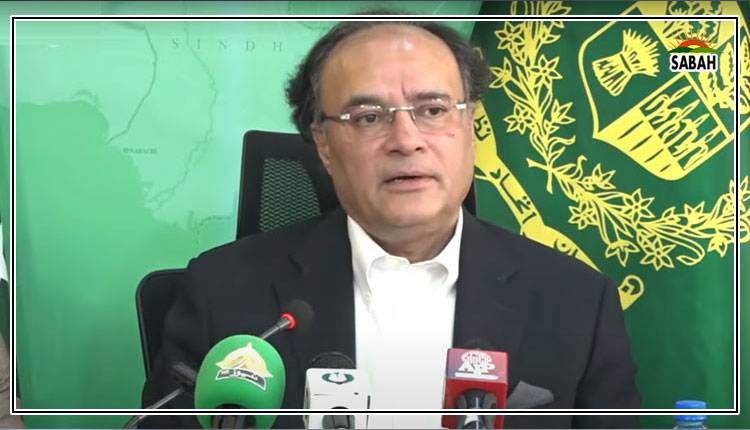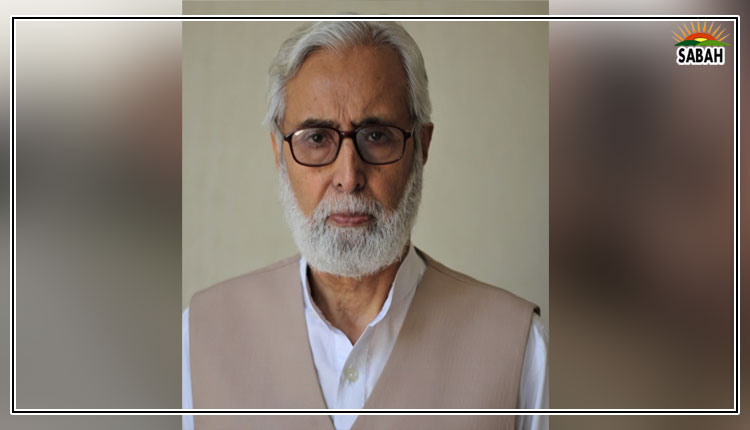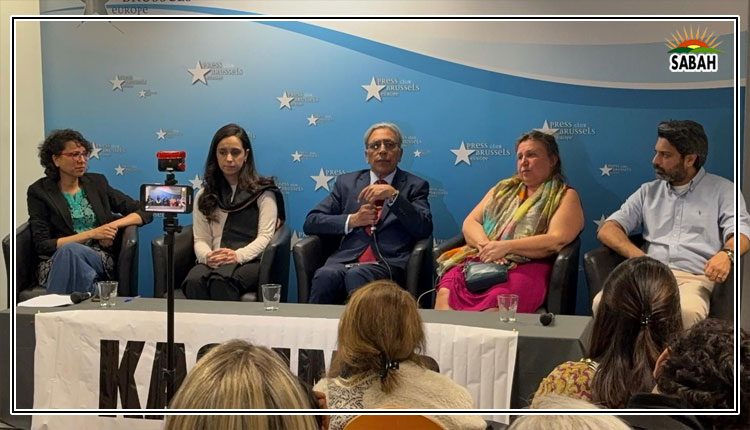The promise of free electricity…Ammar Habib Khan
Political manifestos are often wish lists that rarely come true. Free or cheap electricity is one such promise that may never materialize. Over the last five years, electricity tariffs for lifeline customers have increased by more than 90 per cent while the consumption of electricity per capita has largely stayed flat in the range of 650 units.
Workers washing 300 KWP solar PV system after its installation at Nishtar Medical University and Hospital in Multan, on December 4, 2022. APP
Workers washing 300 KWP solar PV system after its installation at Nishtar Medical University and Hospital in Multan, on December 4, 2022. APP
A constant increase in electricity prices over the last five years has led to a scenario where electricity is unaffordable for the majority of households and industries in the country resulting in consumption per capita remaining flat. An increase in electricity consumption on a per capita basis is a leading indicator of economic growth; lack of growth due to rapid rise in electricity prices has not just dragged economic growth, but has also pushed the country, and its people into a low-growth trap.
In such a scenario where the energy circular debt amounts to more than Rs4.5 trillion, and where the government relies heavily on taxes generated from electricity consumption to plug its perpetual fiscal deficit, it is difficult to even imagine electricity prices staying flat, let alone reducing.
Over the next few years, capacity charges in the electricity tariff are expected to increase rapidly, eventually resulting in a higher incidence of taxation further making it difficult for households and industries to get access to affordable electricity. The inability to access affordable electricity for industries and households alike is one of the biggest impediments to growth. In a nutshell, the economy cannot be fixed till the energy value chain is fixed and that cannot be fixed till the circular debt overhang is fixed.
In such a scenario, political slogans of free or even cheap electricity have little to no basis. The fiscal space to provide free electricity to lifeline households simply does not exist, given the perpetual fiscal deficits the government continues to run. However, it is possible to develop infrastructure and design financial incentives such that lifeline households can get access to close-to-free electricity if not completely free electricity.
Before any of this can be done, the power sector needs to be completely overhauled and more importantly, the country needs to move from the government being the only buyer of electricity in the country, to a multi-party, multi-seller model. It sounds inconceivable, but it is entirely possible, if the imagination and the will is there.
It is estimated that around 55 per cent of residential consumers of electricity in the country are lifeline consumers. It is possible to partially shift the consumption of some of these households towards solar energy. It is also possible to make these households produce electricity, wherein they can consume the electricity they generate while selling surplus electricity back to the grid. This can effectively result in the creation of micro-grids, and mini-grids, wherein rooftop solar installations in an area can pool together to sell electricity to the grid, netting it off against their consumption.
There can be a dozen arguments against this but that still wont change the fact that lifeline consumers continue to face hours of loadshedding daily while continuing to pay a high price for electricity. The technology exists to create decentralized electricity generation systems but that requires the will to fix things, rather than taking the easier way out and passing on an increase in electricity prices through a regulatory mandate.
In the case of Punjab, there are more than 10.7 million households that can be categorized as lifeline consumers, from a total of 18.6 million households, as of 2021. Assuming prevailing costs of rooftop solar systems, even if all households (which is impossible) opt for such a rooftop solar scheme, a 25 per cent down payment made by the government would still be less than the amount of energy subsidy that is allocated on an annual basis to support lifeline consumers.
Effectively, it will be possible to enable a large number of lifeline households to start generating their own electricity, and substantially reduce their electricity bills, while also enabling access to affordable electricity. Moreover, this reduces the burden on the government that continues to foot the bill for inefficient subsidies, because that is the easier way out.
It is estimated that a lifeline consumer can partially meet its requirements with a 1 or 2-kilowatt solar system, depending on its historic consumption. Assuming a down payment of 2.0 per cent to get access to the equipment, the government can pitch in half of the same, while half can be pitched in by the household. The remaining amount can be financed by a financial institution at a concessional rate, such that the monthly payment associated with the equipment largely aligns with the monthly electricity bill of the household.
This can ensure that the monthly bill actually stays predictable, and can be adjusted as the household produces electricity, and sells to the grid. Furthermore, within a few years, the household can fully pay off the solar installation, massively benefiting through increased disposable income.
Electricity distribution companies can play a pivotal role here. Each electricity distribution company knows precisely what consumption of a particular household is, and its repayment behavior. Through the availability of consumption, and repayment metrics, it can do credit assessment of existing households. Based on credit assessment, financing can be extended to eligible households.
Before such an ambitious scheme can be rolled out, it will be essential to upgrade the distribution infrastructure of the electricity distribution companies that continue to suffer due to operational inefficiencies, and heavy losses. A transfer of distribution companies to provinces can potentially trigger the development of a provincial solarization scheme. Moreover, it remains critical that the circular debt is settled before any of this can happen. Monetizing debt to take the burden off the households is one way to go about it but that requires fiscal discipline on the part of the government.
Rooftop solarization is an ambitious plan, but something that has been successfully executed in many other countries. The existing pool of subsidies can be reallocated to create a more stable, low-cost, and renewable source of energy for the most vulnerable households. This will certainly require heavy investment in grid infrastructure, but the potential economic and social divide the scheme can generate can far outweigh the financial costs that are already being incurred in the form of blanket energy subsidies. To serve the people, the government can either take an easier inefficient way out or reallocate capital that maximizes the welfare of lifeline households, while breaking the shackles of the low-growth trap.
Courtesy The News












